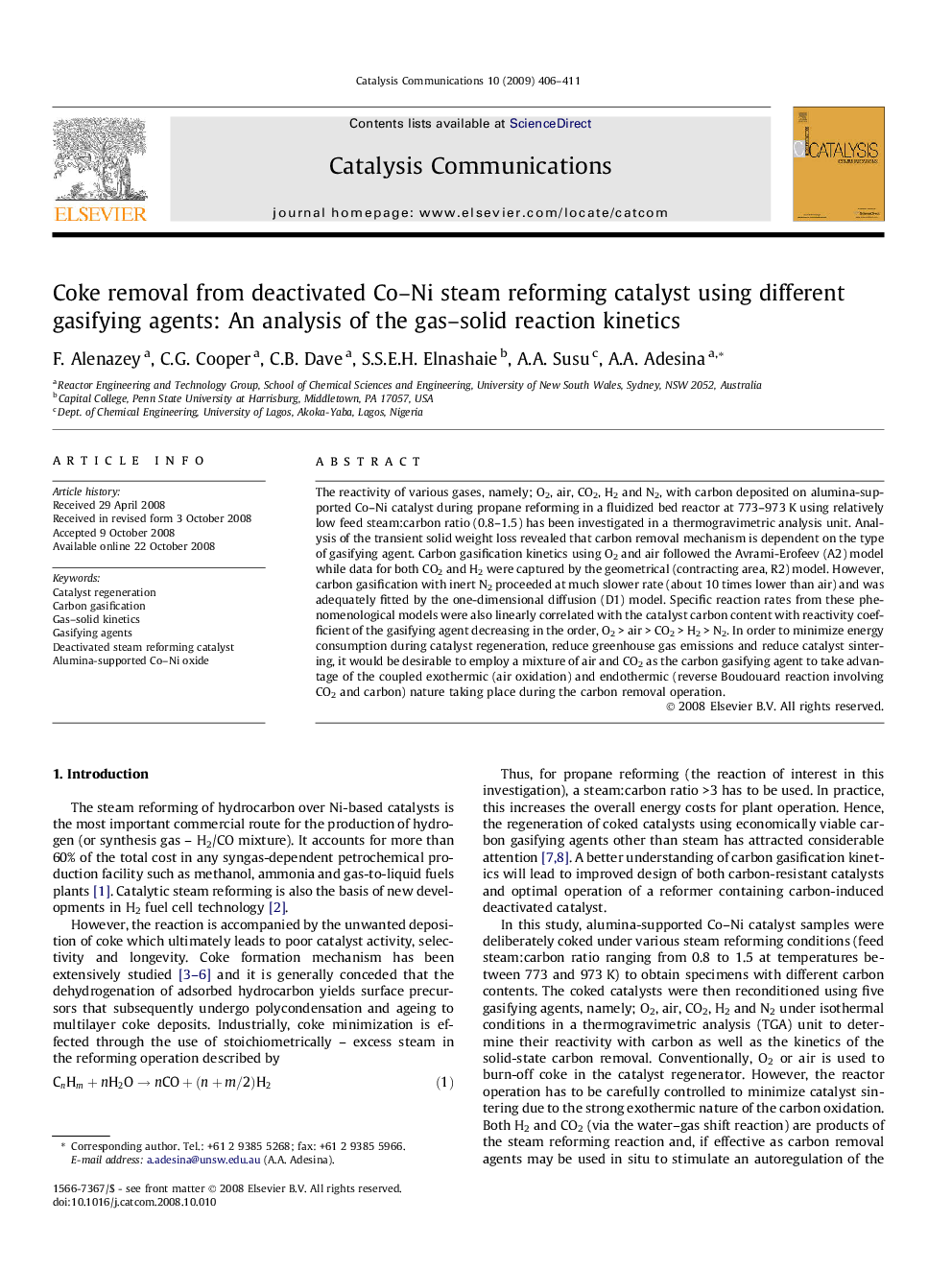| کد مقاله | کد نشریه | سال انتشار | مقاله انگلیسی | نسخه تمام متن |
|---|---|---|---|---|
| 51742 | 46852 | 2009 | 6 صفحه PDF | دانلود رایگان |

The reactivity of various gases, namely; O2, air, CO2, H2 and N2, with carbon deposited on alumina-supported Co–Ni catalyst during propane reforming in a fluidized bed reactor at 773–973 K using relatively low feed steam:carbon ratio (0.8–1.5) has been investigated in a thermogravimetric analysis unit. Analysis of the transient solid weight loss revealed that carbon removal mechanism is dependent on the type of gasifying agent. Carbon gasification kinetics using O2 and air followed the Avrami-Erofeev (A2) model while data for both CO2 and H2 were captured by the geometrical (contracting area, R2) model. However, carbon gasification with inert N2 proceeded at much slower rate (about 10 times lower than air) and was adequately fitted by the one-dimensional diffusion (D1) model. Specific reaction rates from these phenomenological models were also linearly correlated with the catalyst carbon content with reactivity coefficient of the gasifying agent decreasing in the order, O2 > air > CO2 > H2 > N2. In order to minimize energy consumption during catalyst regeneration, reduce greenhouse gas emissions and reduce catalyst sintering, it would be desirable to employ a mixture of air and CO2 as the carbon gasifying agent to take advantage of the coupled exothermic (air oxidation) and endothermic (reverse Boudouard reaction involving CO2 and carbon) nature taking place during the carbon removal operation.
Journal: Catalysis Communications - Volume 10, Issue 4, 10 January 2009, Pages 406–411